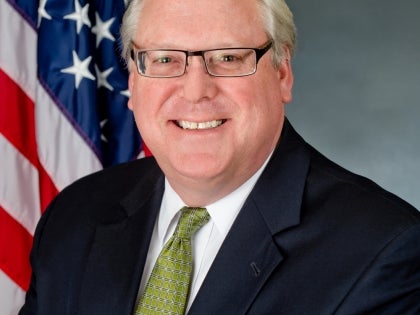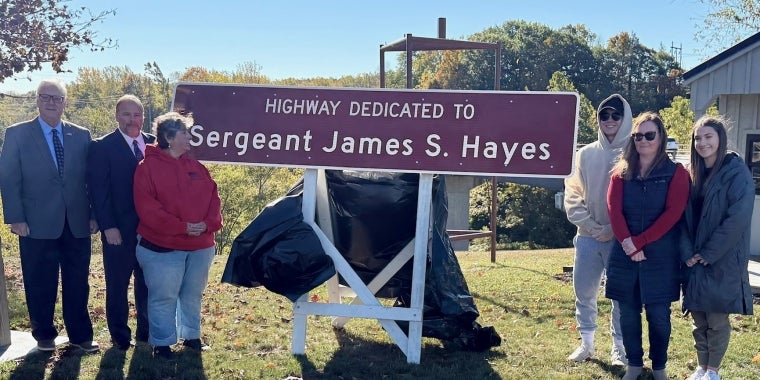
O'Mara welcomes new treatment beds at Cayuga Addiction Recovery Services ~ This year's state budget increased funding to expand recovery, treatment services
July 21, 2016

Trumansburg, N.Y., July 21—State Senator Tom O’Mara (R,C,I-Big Flats), a member of the Senate Task Force on Heroin and Opioid Addiction, welcomed today’s announcement that $1 million in state funding is being awarded to Cayuga Addiction Recovery Services in Trumansburg (Tompkins County) to construct a new, 25-bed residential treatment facility to treat patients suffering from substance use disorders.
"We know that treatment and recovery services are cornerstones of this ongoing battle against heroin and opioid addiction. These new residential treatment beds are critical. I commend and I look forward to continue working with Governor Cuomo and his administration, Cayuga Addiction Recovery Services, my colleagues on the Senate Task Force on Heroin and Opioid Addiction and all of the local leaders, law enforcement and concerned citizens doing our best to strengthen the state-local-federal partnership that's needed to effectively combat this heroin and opioid epidemic,” said O’Mara.
Read more from Bill Rusen, CEO of Cayuga Addiction Recovery Services, in the Ithaca Journal on today's announcement, "Tompkins County to get new 25-bed opioid treatment facility"
According to the funding announcement, which was made earlier today in Tompkins County by the New York State Office of Alcoholism and Substance Abuse Services (OASES), Cayuga Addiction Recovery Services’ new residential treatment facility “will offer a full spectrum of addiction treatment services to residents including counseling, life-skills training and after-discharge support. These services will be delivered at a new building on the Trumansburg treatment provider’s campus, bringing jobs and economic and community benefits to the region.”
Cayuga Addiction Recovery Services will receive annual operational costs of up to $1 million once the program is opened, according to OASAS, who will administer the funding. OASAS will also work with Cayuga to provide capital funding for construction needs at the treatment space if that’s necessary.
OASAS Commissioner Arlene González-Sánchez said, “At our recent Heroin and Prescription Opioid Task Force forums across the state, many New Yorkers called for more addiction treatment services. These new treatment beds in the Southern Tier are a critical addition to our efforts to stop this epidemic and to ensure that New Yorkers in need of addiction treatment have services. Every New Yorker suffering from addiction should be afforded an opportunity to engage in treatment so that they can get their lives back on the right path. Today, we give more New Yorkers that opportunity and are another step closer to a stronger, healthier New York.”
O’Mara said that the 2016-17 budget invests nearly $200 million through OASAS to combat the heroin and opioid epidemic -- an 82 percent increase in state spending since 2011. This investment includes $66 million for residential treatment beds, including counseling and support services for roughly 8,000 individuals; $38 million to fund medication-assisted treatment programs that serve approximately 12,000 clients in residential or outpatient settings; $25 million in funding for state-operated Addiction Treatment Centers; $24 million for outpatient services that provide group and individual counseling; and $8 million for crisis/detox programs to manage and treat withdrawal from heroin and opioids.
The new funding, including today’s award, is being allocated to add 270 treatment beds and 2,335 opioid treatment program slots across the state to help New Yorkers suffering from substance use disorder and to expand vital treatment and recovery resources. It will also fund additional family support navigators across New York to assist substance users and their families locate and access treatment options and cope with addiction, and expand the on-call peer program which partners individuals in recovery with people in hospitals suffering from substance use disorder to help connect these individuals to treatment and other resources upon discharge. The state is also increasing the number of Recovery Community and Outreach Centers and Adolescent Club Houses statewide to provide safe spaces for teens in recovery that deliver health and wellness services for teens and young adults.
In addition to the increased funding, O’Mara said that the Legislature and Cuomo also enacted a comprehensive package of new anti-heroin laws this year that continue to strengthen the New York’s prevention, recovery, treatment and enforcement efforts. The new laws include initiatives to: significantly reform insurance laws and regulations to ensure broader coverage of substance use disorder treatment and improve access to addiction treatment; place limits on opioid prescriptions for acute pain; increase, from 48 to 72 hours, evaluation for individuals incapacitated by drugs; require training to improve connections to substance use disorder care upon hospital discharge; require ongoing education about addiction and pain management for physicians and prescribers; and mandate pharmacists to provide information about risks of substance use disorder to clients.
“Both the Senate Task Force on Heroin and the governor’s task force focused on direct, local input as the driving force behind these new actions. We heard directly from the local front lines in fighting this heroin crisis and that’s the foundation we’re building on and will keep building on,” O’Mara. “This local input, which has also been reflected in actions we’ve taken over the past several years as well as in this year’s state budget, helps us target the necessary responses and will keep our strategies as up to date as possible. Heroin is devastating lives in Penn Yan, Hornell, Ithaca, Elmira and many other communities throughout the Southern Tier and Finger Lakes regions, and statewide. Local input has been the driving force behind the new actions we’re taking this week to strengthen the state-local partnership and keep putting in place the most effective combination of law enforcement, awareness and education, and treatment and prevention. We need to keep acting and keep working, and we will."
Share this Article or Press Release
Newsroom
Go to Newsroom


